Samayik is the Practice to Attain Equality and Equanimity
- Sadhvi Kanak shri
North Howrah (Kolkata), 7th September, 2010
The Third Day of Paryushan-2010 in the sequence of Ashtahnik Upasadiksha (eightfold initiation) was observed as the “Samayik Diwas” at SAM Garden, North Howrah. Samayik is an act through which lay followers practice and prayer and keep themselves away from all sinful act, be it by body, speech or thoughts during the minimum period of one muhurat i.e.48 minutes. This is the state of complete thoughtfulness for knowing ones self. It is practiced regularly to purify one’s soul from the bondage of karmas caused by our actions. Samayik literally means to be around one’s soul or self through meditation.
Sadhvi Kanak shri ji, learned disciple of Yugpradhan Acharya Shri Mahashraman ji in the series of Paryushan discourses said - “ Samayik is the practice to attain equality and equanimity. It is the first and the last step to be practiced by a follower of Jainism. Jain religion believes is equality”. The practice of observing equality is Samayik. Samayik is the observance of self - inspection, self - cleansing and self - merriment. A muhurat long (forty eight minute) practice of mental, verbal and physical resistance is observed to help lead a life of non - violence and peace. It promotes a system of a living a thoroughly balanced life. Scientific experiments have also proved that for a healthy, peaceful and long life religious homage is of utmost importance and must be a part of the daily routine.
Discussing the ups and downs in the life cycle of Lord Mahavira, Sadhvishri said, “Simplicity, delicacy and sensitivity enlighten equality in one’s soul”. Whenever anger, pride, deceit, conceit and greed empowers, equality fades out. The level of consciousness gets disturbed. Enlightening the shravak/shravikas present, Sadhvishri explained the historical context of how Lord Mahavira completed the journey from anger/pride to Arham.
Sadhvi Madhulata ji, in her effective presentation on the Samayik process said, “When a Jain devotee observes Samayik, he practices sadhana of sainthood. As far as the purity of practice of Samayik is concerned, what matters is quality and not quantity. Samayik should be effective enough to bring changes in our behaviour such that our daily behavior reflects equanimity”.
In the evening the collective pratikramana was practiced by hundreds of lay followers, and there after Arhat Vandana was joined by lay followers. After that Sadhvi Kanakshriji enchanted the devotees present giving discourse on ‘Hathi se Himalaya’ on old and earlier births of Lord Parshwanath- the 23rd of the Jain Tirthankar, giving message on how jealousy can lead to numerous births from one to another and the karmas of jealousy and anger can eliminate original qualities of a soul.
Members of South Howrah Sabha led by Sri Jawarimal Nahata (president) participated in the uninterrupted Namokar Mantra chanting in the night.
The Photos:
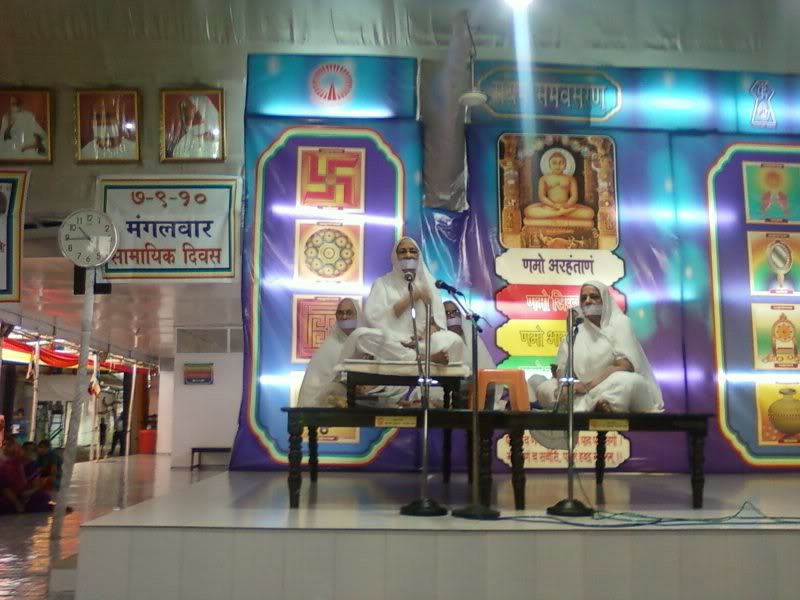 Sadhvi Kanakshriji delivering message on the importance of swadhyaya in life
Sadhvi Kanakshriji delivering message on the importance of swadhyaya in life
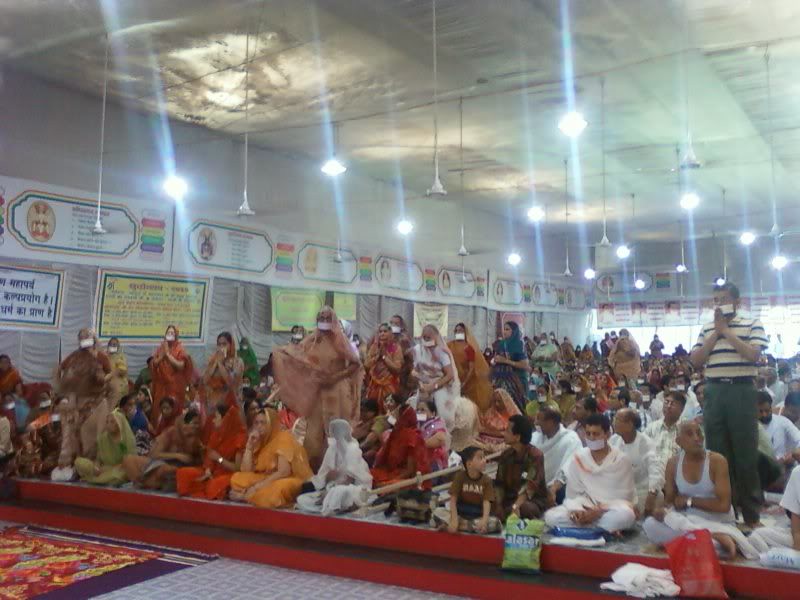 Shrawak and shravikas listening to the discourse
Shrawak and shravikas listening to the discourse
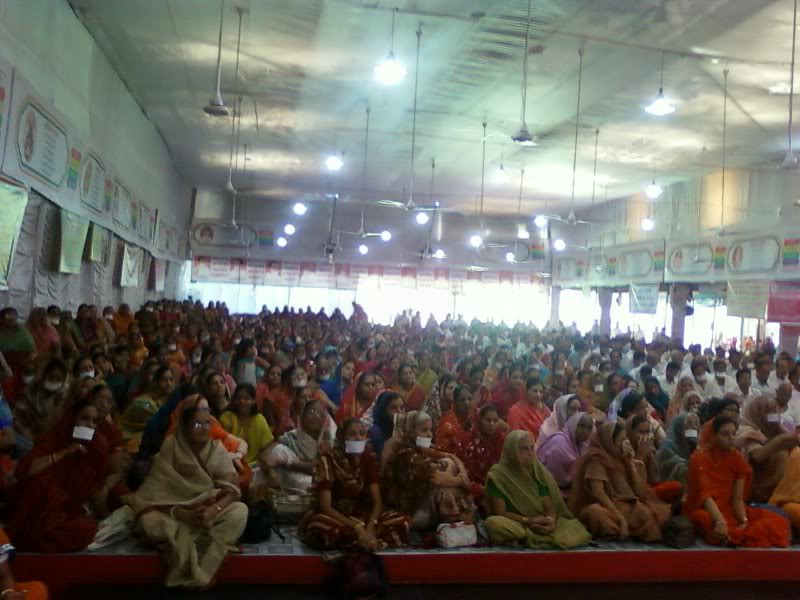 Women lay followers listening to the discourse
Women lay followers listening to the discourse
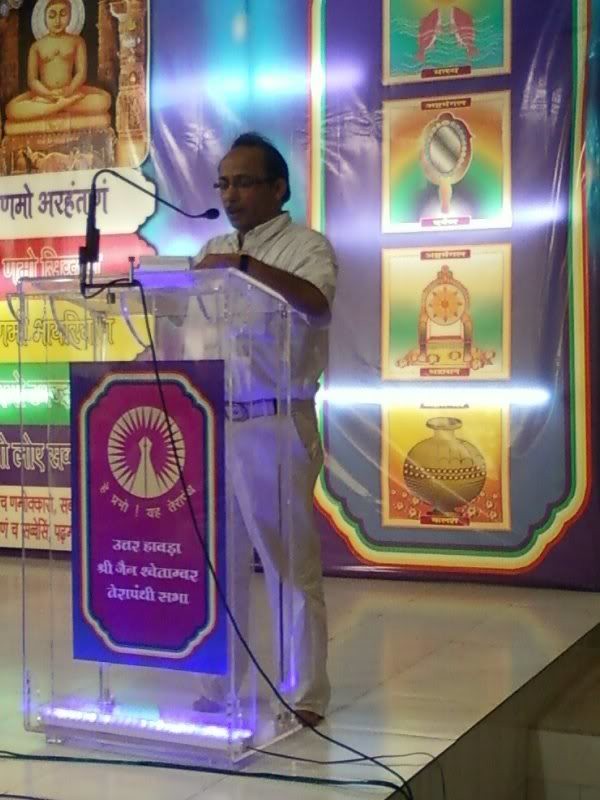 North Howrah Sabha General Secretary Sri Bimal Baid compeering the programme
North Howrah Sabha General Secretary Sri Bimal Baid compeering the programme
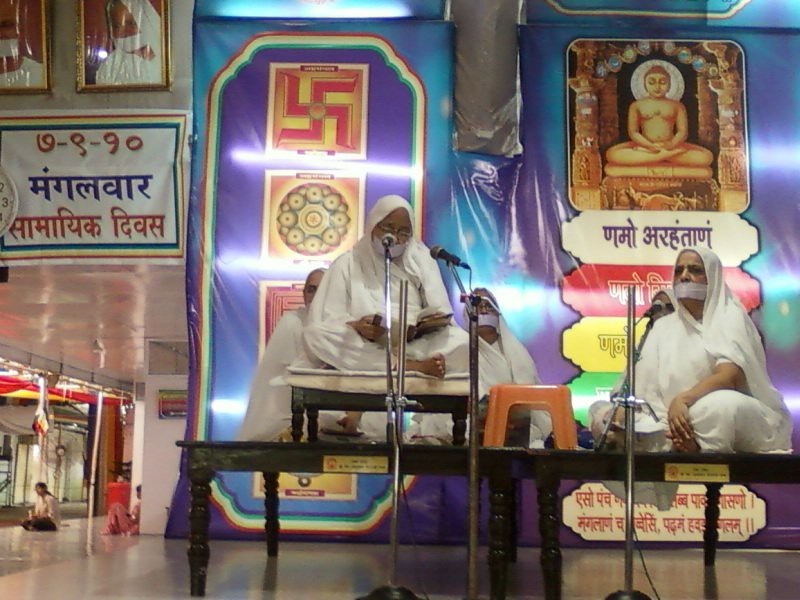 Sadhvi Kanakshriji giving discourse on the life of old bhaw of Lord Mahavira
Sadhvi Kanakshriji giving discourse on the life of old bhaw of Lord Mahavira
 Devotees listening mangal path
Devotees listening mangal path
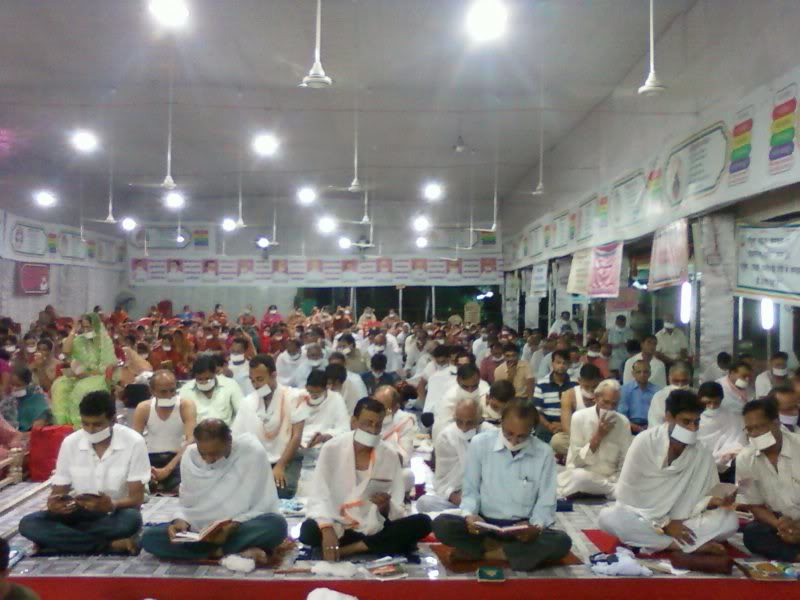 Shrawaks doing pratikramana
Shrawaks doing pratikramana
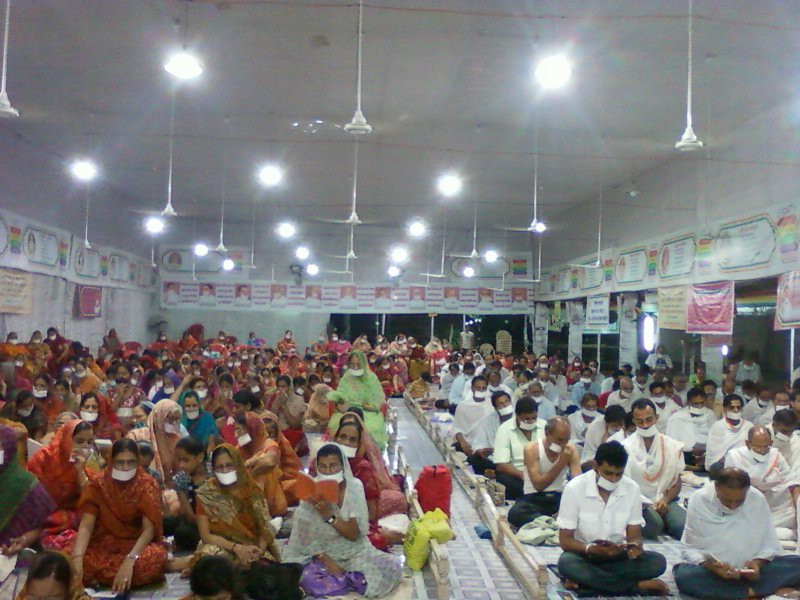 Shrawaks and shrawakis in pratikraman
Shrawaks and shrawakis in pratikraman
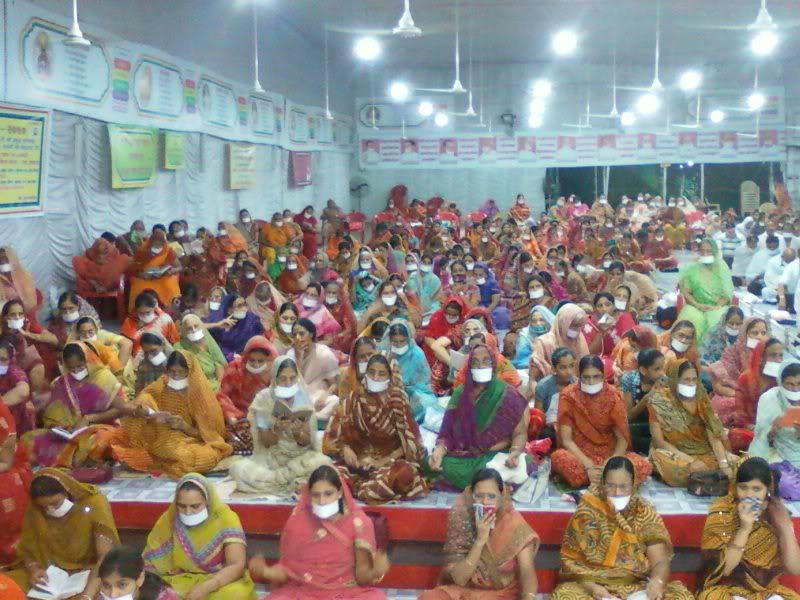 Shrawikas doing pratikraman
Shrawikas doing pratikraman
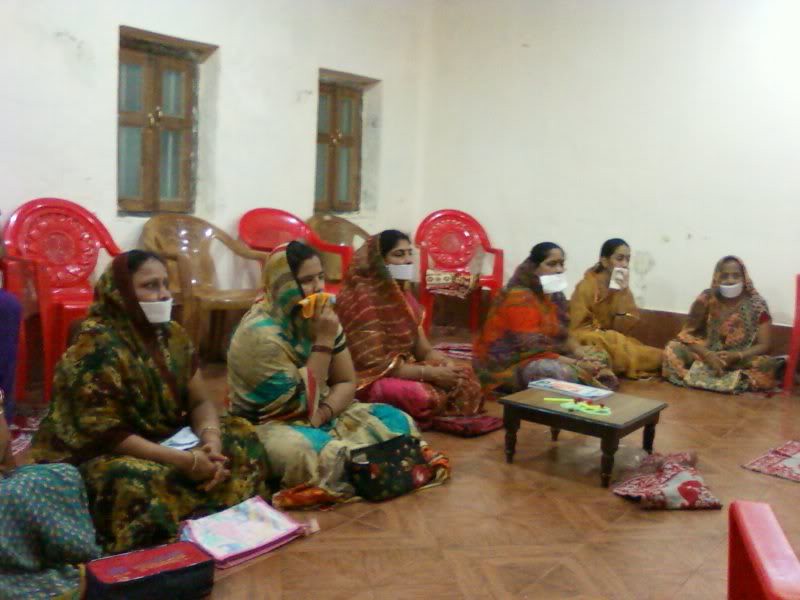 Ladies wing of Mahila Mandal chanting manokar mantra
Ladies wing of Mahila Mandal chanting manokar mantra
 Sadhvi Kanakshriji giving discourse on 'Hathi se Himalaya' on old and earlier births of Lord Parshwanath.
Sadhvi Kanakshriji giving discourse on 'Hathi se Himalaya' on old and earlier births of Lord Parshwanath.